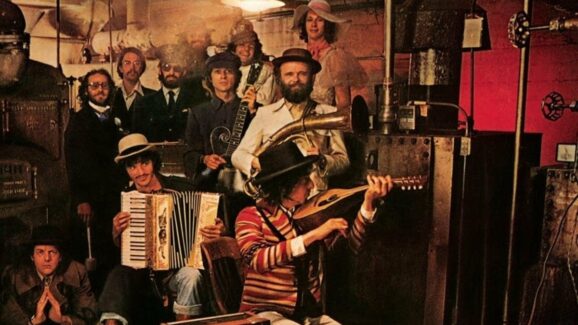.jpg) Considering how much has been written, spoken and contemplated about Bob Dylan’s appearances at the Newport Folk Festival, especially his (literally and figuratively) electric set in 1965, it boggles the mind it’s taken forty years for the film of those shows to find broad circulation. But the wait to see Murray Lerner’s The Other Side of the Mirror is worth it, because the director lets the performances speak for themselves, and they constitute a profound statement indeed.
Considering how much has been written, spoken and contemplated about Bob Dylan’s appearances at the Newport Folk Festival, especially his (literally and figuratively) electric set in 1965, it boggles the mind it’s taken forty years for the film of those shows to find broad circulation. But the wait to see Murray Lerner’s The Other Side of the Mirror is worth it, because the director lets the performances speak for themselves, and they constitute a profound statement indeed.
There is virtually no footage in this near ninety-minutes that is interview or commentary on the content itself, which is as it should be once you see the film. Bob Dylan finds his voice as a performer and songwriter in this two-year span from 1963 to 1965 and the metamorphosis is dramatic. To watch the winsome waif of 1963, awash in his righteous indignation singing "Who Killed Davey Moore?" is a far cry from the visibly inspired authoritative figure of a year later. As stylish in dress as body language proffering the less topical and decidedly more mystical poetry about “Chimes of Freedom” and "Mr. Tambourine Man,” Dylan was clearly transformed.
Dylan spoke to his audience and they listened raptly most of the time in both concerts and workshops these three years, but when you witness the response to the electric performance of “Maggie’s Farm” and "Like a Rolling Stone, " you begin to wonder if the attendees truly heard what Dylan was saying all along. He was clearly proud enough of his work to move beyond the increasingly elitist closed circle of the folk world and his confidence appears both justified and necessary the audience was less than willing to follow.
In the interview segment included on the DVD as its sole bonus feature, director Lerner, who went on to film England’s Isle of Wight Festivals and pioneer 3D in collaboration with Disney, gives some insight into his focused approach to cinema. His take on Dylan as a musical figure whose poetry transcended his brilliant use of words is only a little less provocative. But the most significant observations Lerner makes, however, concerns electric music in general—he ponders the physical effects on of listeners—and in specific regarding to Dylan’s legendary performance–Bob wasn’t even the only act to play electric music at Newport: The Paul Butterfield Blues Band (whose rhythm section and guitarist, Mike Bloomfield, accompanied Dylan) gave a whole new twist to blues when they appeared. Lerner leaves unspoken the question why Dylan’s approach evoked the reaction it did.
But such questions, and much else, are worth ruminating on as you watch what constitutes something of an elongated time-elapse chronicle of Bob Dylan coming of age.












